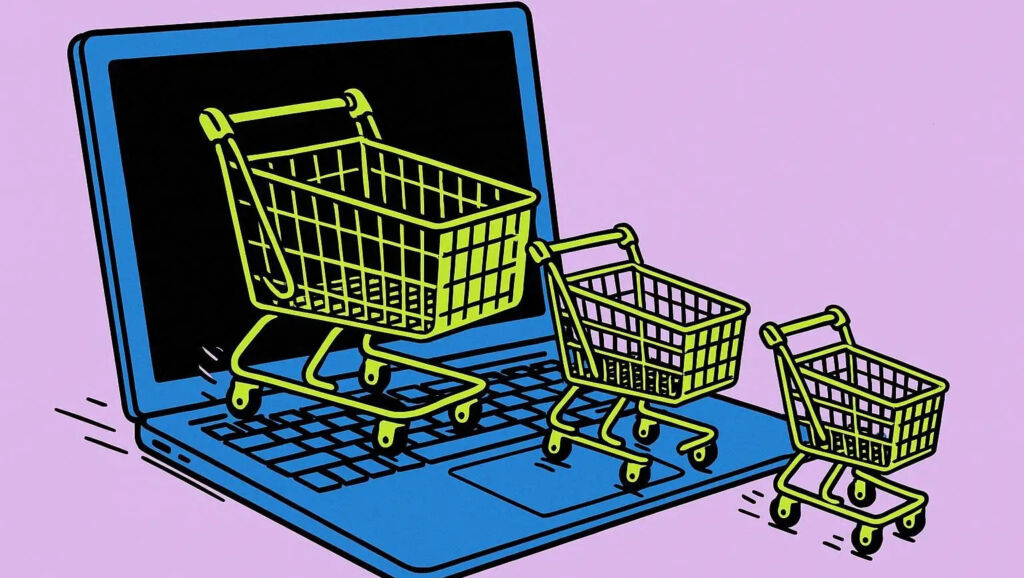Retail Media: Will Every Storefront Become an Ad Network?
by on 17th Oct 2025 in News

We put retail media under the microscope, comparing advertising on walled garden platforms and the open web, looking at newly introduced standards in the space, and examining how agentic AI could transform it.
Another week, another new ad network. Two last week, actually: first, American Express announced the launch of Amex Ads. The platform will allow brands to tap into its extensive trove of first-party customer data, with the opportunity of targeting audiences of up to 34 million US cardholders.
Duolingo also joined the party, with the launch of a direct ad sales platform which allows advertisers to buy premium in-app inventory and custom ad formats. The platform emphasises the brand safety of its platform, which allows advertisers to leverage its characters and storytelling style to create more engaging experiences for users.
It was Mastercard the week before, launching Mastercard Commerce Media, which plans to leverage the payment provider’s base of 500 million customers.
We’re also seeing significant collaborations within the retail space: on Tuesday, Walmart announced a partnership with OpenAI which will allow the retailer’s customers to complete purchases from Walmart directly within the AI company’s chatbot. Walmart says it will shift the retail experience “from reactive to proactive”, as AI “learns, plans, and predicts, helping customers anticipate their needs before they do”.
Walled gardens vs the open web
Walled garden retail media platforms offer advertisers significant opportunities. An obvious positive is guaranteed brand safety. There’s no risk of problematic placements, such as showing ads alongside misinformation or hate-fuelled speech. A safe context for placements is pretty much guaranteed.
Delving into the data side, walled garden retail media gives advertisers access to high-quality first party data. Logged-in, verified purchase data. Targeting can be incredibly precise, as it’s tied to verified purchase behaviour and shop keeping units.
It also gives advertisers the ability to see exactly how ads drive sales. It offers closed-loop measurement: results which clearly link exposure of ads to purchase within their ecosystem.
However, advertisers are often limited when it comes to transparency. They can’t typically see how the numbers were calculated in full detail, with retailers retaining full control over data, insights, and campaign reporting. Advertisers still get trustworthy performance metrics, but transparency is lacking. In other words, they show the what, but hold back on the how.
Advertisers are also typically unable to export the data to match it to their own datasets, which introduces problems of fragmentation as they are unable to easily merge this data with other data. Plus, every retail media network has its own reporting and buying interface, complicating things even further. We’ll go into more detail about that in a moment.
Many ad industry members are encouraging advertisers to venture out into the open web. Firstly, it can certainly offer advertisers more transparency. The open web also provides unmatched scale, offering such diverse content over such a large number of publishers. It’s not limited to retailer-owned digital real estate and foot traffic. Advertisers can use the same first-party data from a publisher, but activate it offsite through clean rooms, for example.
Too many ad networks?
“Everything is an ad network”... Could there be such a thing as…too many?
As retail media grows, so can complications for advertisers. Traditional ad formats often fail to integrate smoothly within retailer websites, causing the proliferation of bespoke formats which increases complexity for advertisers, straining their resources and also hindering scalability.
Alongside releasing updated versions of two new industry documents last week, IAB Europe outlined the challenges for advertisers, noting that despite certain benefits, the rising number of bespoke solutions complicates the buying, managing, and reporting of retail media campaigns.
The trade body opened public comment on two new industry documents for commerce measurement: its Retail Media Measurement Standards, and Commerce Media Measurement Standards. Updates to the standards include expanded scope (moving beyond retail media to also cover quick commerce); detailed explanations for media metrics, attribution, insights, and adjustments specific to commerce; and simplified measurement reporting, allowing brands and agencies to compare performance across retailers.
The updated standards are open for public comment until 14th November.
How will agentic AI supercharge retail media?
Many retail media challenges, however, could be eased by harnessing agentic AI systems. Agentic AI – which can autonomously plan, act, and execute actions to work towards particular goals – could have a huge impact on how the retail media sector operates. (If you want a recap of how agentic AI works, you can find that here.)
Agentic AI agents have the ability to conduct tasks continuously, so they are able to constantly monitor and analyse retailers’ data, such as promotions and pricing trends. Agentic systems could auto-generate campaign plans based on the insights gathered from their data analysis, creating plans which are in-line with trends, for example.
Budget can be shifted based on performance or other signals. Ad optimisation can be carried out by agentic systems in real time, too, leading to more effective campaigns.
Significantly, agentic systems could also help advertisers to better bridge the gap between walled garden and open web retail media.
Agentic AI is also set to revolutionise retail media on the consumer side, seeing as one of its designs is to be able to complete purchases on behalf of users. This will be pretty transformative to the sector, with machines scanning potential purchasing options instead of humans. OpenAI and Walmart’s partnership reflects this idea: Walmart calls their new offering “agentic commerce in action”.
The future is bright for retail media
In spite of certain challenges, advertisers are poised to reap the benefits of retail media over the coming months and years. Although overall rates in retail media ad spend are slowing year-over-year, the channel’s contribution to total digital ad spend continues to rise, according to a forecast by eMarketer. Elsewhere, WPP’s 2025 This Year Next Year report forecasted that retail media revenue will overtake that of total TV in 2027.
And, for sure, we’ll be seeing the birth of more retail media networks.











Follow ExchangeWire